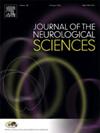Brain under pressure: Insights into diving-related lesions: a descriptive study
IF 3.6
3区 医学
Q1 CLINICAL NEUROLOGY
引用次数: 0
Abstract
Background
Diving-related injuries remain as a significant health threat, when involvement of the central nervous system (CNS). Decompression sickness (DCS), particularly type II involving neurological symptoms, can lead to brain lesions though specific patterns.
Objective
This study aims to characterize the clinical and radiological features of brain involvement in diving-related injuries, with a focus on corpus callosum lesions.
Methods
We conducted a retrospective study from 2011 to 2023 in the neurology department of a military hospital in Tunis, including divers with acute neurological injuries. Data were collected on diving history, clinical presentations, and radiological findings. MRI protocols included T1, T2, FLAIR, gradient echo, and diffusion-weighted imaging (DWI) sequences.
Results
Among 41 enrolled patients, 10 exhibited cerebral involvement, all male professional divers with a mean age of 41 years. Symptoms manifested within 10 min of surfacing in 65.8 % of cases and included sensory-motor deficits, vertigo, and headache. MRI revealed diverse patterns: corpus callosum hyperintensities on T2 FLAIR in five cases, an acute ischemic stroke in one patient, and punctiform or nodular lesions in others. DWI abnormalities suggested both cytotoxic and vasogenic edema.
Conclusion
Cerebral DCI presents with variable clinical and radiological patterns. Corpus callosum involvement is a hallmark finding, reflecting its vulnerability to ischemia and vasogenic edema. Early detection through a detailed clinical examination allows targeted follow up and recompression therapy. Future research should focus on integrating clinical and imaging data to identify prognostic factors and improve management strategies.
压力下的大脑:对潜水相关损伤的洞察:一项描述性研究
背景:当涉及中枢神经系统(CNS)时,潜水相关损伤仍然是一个重大的健康威胁。减压病(DCS),特别是涉及神经系统症状的II型,可通过特定模式导致脑损伤。目的本研究旨在描述潜水相关损伤脑受累的临床和影像学特征,重点研究胼胝体损伤。方法对2011年至2023年在突尼斯某军事医院神经内科住院的急性神经损伤潜水员进行回顾性研究。收集了潜水史、临床表现和放射学表现的数据。MRI方案包括T1、T2、FLAIR、梯度回波和弥散加权成像(DWI)序列。结果41例患者中,10例表现为大脑受累,均为男性,平均年龄41岁。65.8%的病例在10分钟内出现症状,包括感觉-运动障碍、眩晕和头痛。MRI显示不同的模式:5例胼胝体T2 FLAIR高信号,1例急性缺血性脑卒中,其他患者点状或结节状病变。DWI异常提示细胞毒性和血管源性水肿。结论脑DCI具有多种临床和影像学表现。胼胝体受累是一个标志性的发现,反映了它对缺血和血管源性水肿的易感性。通过详细的临床检查进行早期发现,可以进行有针对性的随访和再压迫治疗。未来的研究应集中在整合临床和影像学数据,以确定预后因素和改善管理策略。
本文章由计算机程序翻译,如有差异,请以英文原文为准。
求助全文
约1分钟内获得全文
求助全文
来源期刊

Journal of the Neurological Sciences
医学-临床神经学
CiteScore
7.60
自引率
2.30%
发文量
313
审稿时长
22 days
期刊介绍:
The Journal of the Neurological Sciences provides a medium for the prompt publication of original articles in neurology and neuroscience from around the world. JNS places special emphasis on articles that: 1) provide guidance to clinicians around the world (Best Practices, Global Neurology); 2) report cutting-edge science related to neurology (Basic and Translational Sciences); 3) educate readers about relevant and practical clinical outcomes in neurology (Outcomes Research); and 4) summarize or editorialize the current state of the literature (Reviews, Commentaries, and Editorials).
JNS accepts most types of manuscripts for consideration including original research papers, short communications, reviews, book reviews, letters to the Editor, opinions and editorials. Topics considered will be from neurology-related fields that are of interest to practicing physicians around the world. Examples include neuromuscular diseases, demyelination, atrophies, dementia, neoplasms, infections, epilepsies, disturbances of consciousness, stroke and cerebral circulation, growth and development, plasticity and intermediary metabolism.
 求助内容:
求助内容: 应助结果提醒方式:
应助结果提醒方式:


